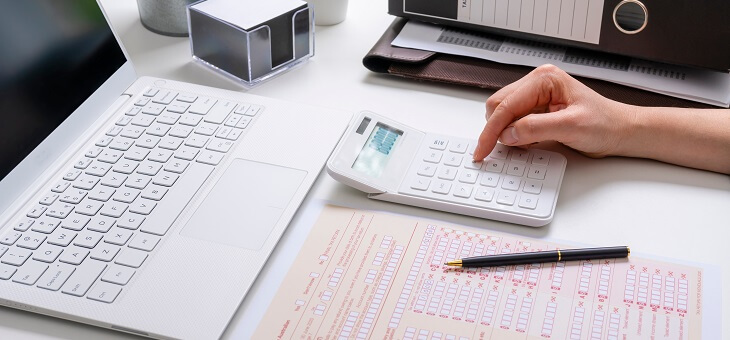If you’re already preparing your tax return for the 2021-22 financial year – and if you’re anticipating a payment why wouldn’t you be getting in quick – the Australian Tax Office (ATO) says you may need to brush up on COVID deductions.
Assistant Commissioner Tim Loh says the ATO expects COVID will have continued to affect the income and deductions taxpayers will be reporting. “We know that many have faced significant challenges this year and the ATO is here to help you to get your tax right the first time,” he says.
Taxpayers should be aware of changes that may affect what can be included as income or what can be claimed as a deduction. Among the most common are income support payments and claimable work-related expenses.
“Tax time can be a smooth and easy experience if you know what income you must include and what COVID-19-related expenses you can claim in your tax return” says Mr Loh.
Read: What the ATO is looking for this year
If you bought COVID tests from 1 July 2021 for work-related purposes, such as to determine if they could attend or remain at work, they can be claimed as a deduction.
You must receipts or invoices to prove you paid for the tests. If you don’t have either, then ou need “reasonable evidence” relating to the cost of the test and the fact you were required to take it for work purposes – for example, a bank or credit card statement or evidence from an employer.
You can’t claim for a test that your employer provided or reimbursed you for. And only tests that are required for work-related purposes can be claimed.
“If you purchased a COVID-19 test for a trip with your mates, you can’t claim a deduction,” says Mr Loh.
Read: Should Australia increase the tax threshold?
You may also be able to claim a deduction for the cost of items that protect against risk of illness or injury while performing work duties.
“If you’re spending your working day in close proximity to customers and at risk of contracting COVID-19, you may be able to claim a deduction for protective items such as gloves, face masks or sanitiser.,” says Mr Loh. “This will be most common in industries such as retail, cleaning and hospitality.”
Visit protective items, equipment and products for more information.
Mr Loh says the easiest way to keep track of work-related expense records is with the ATO app.
The ATO has provided the following information about the tax treatment of different payments.
JobSeeker payments are taxable. This information will be automatically pre-filled in tax returns at the Government Allowances and Payments label once it’s ready. If taxpayers choose to lodge before this information is pre-filled, it will need to be added manually. Leaving out income will delay the tax return being processed.
COVID disaster payments, delivered through Services Australia, for those affected by restrictions are not taxable. They do not need to be included in tax returns.
Pandemic leave disaster payments are taxable. The need to be included in tax returns for the income year in which the amounts were received. Services Australia provided recipients with a letter for every payment.
If you received the one or more pandemic leave disaster payment, you’ll need to manually add up all the amounts received and include the total amount received in your tax return. This payment won’t be prefilled in.
“While the information isn’t prefilled for you, not adding pandemic leave disaster payments to your tax return will delay the processing of your return and your potential refund,” says Mr Loh
Read: Aussies’ tax burden among highest in developed world
If you use a registered tax agent, remember to let him or her know if you received the pandemic leave disaster payment.
Get a quick guide of the ATO’s treatment of the various COVID-19 payments here.
If you’ve been working from home, you may be able to claim the following expenses:
- electricity costs associated with heating, cooling and lighting your work area and running items you’re using for work
- cleaning costs for a dedicated work area
- phone and internet costs
- computer consumables (for example, printer paper and ink) and stationery
- home office equipment, including computers, printers, phones, furniture and furnishings – you can claim either the
- full cost of items up to $300
- decline in value (depreciation) for items over $300.
If you enjoy our content, don’t keep it to yourself. Share our free eNews with your friends and encourage them to sign up.

